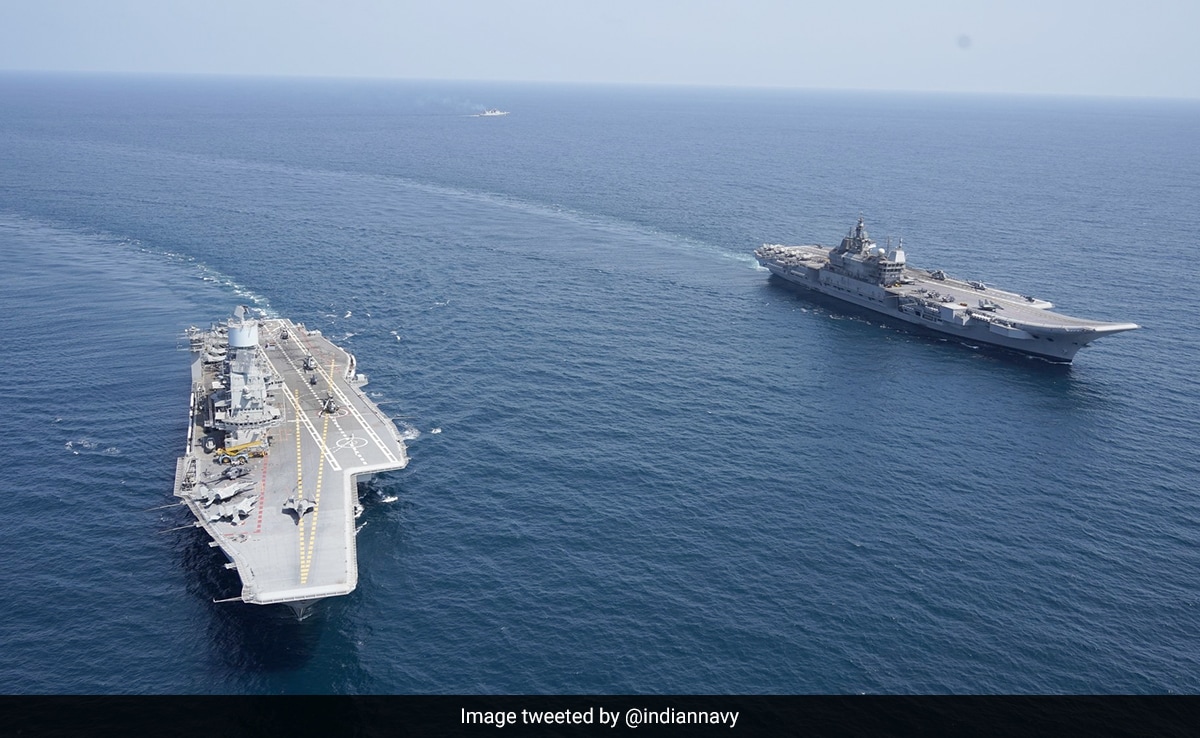
The recent mega operation conducted by the Indian Navy in the Arabian Sea has showcased the impressive combat capabilities of the country’s naval forces. This exercise, which involved two aircraft carriers, numerous warships, submarines, and a fleet of over 35 frontline planes, holds significant strategic importance. One of the key motivations behind this display of naval strength is the increasing presence of China in the Indian Ocean region, which has raised concerns among Indian defense planners.
At the heart of this exercise were the Indian Navy’s aircraft carriers, namely the INS Vikramaditya and the newly commissioned INS Vikrant. Acting as floating airfields, these carriers provided a launchpad for a diverse range of aircraft, including the MiG-29K fighter jets and various helicopters such as the MH60R, Kamov, and Advanced Light helicopters. The exercise, which was carried out recently, showcased the seamless operational integration of these carriers, along with the accompanying fleet ships and submarines.

The successful execution of carrier battle group (CBG) operations demonstrates the pivotal role played by sea-based air power in maintaining maritime superiority. A carrier battle group comprises an aircraft carrier accompanied by a fleet of destroyers, frigates, and other supporting vessels. The Indian Navy’s ability to effectively coordinate and integrate such a massive naval fleet is a testament to its technological expertise and commitment to enhancing maritime security.
Commander Vivek Madhwal, the Indian Navy spokesperson, emphasized the significance of this exercise, describing it as a “significant milestone” in the pursuit of enhancing maritime security and power projection in the Indian Ocean and beyond. The demonstration of naval prowess showcased India’s commitment to safeguarding national interests, promoting regional stability, and fostering cooperative partnerships in the maritime domain.
The involvement of the recently commissioned INS Vikrant holds particular significance. As the first mega exercise conducted after its induction in September, the INS Vikrant symbolizes India’s capability to manufacture aircraft carriers in the above 40,000-tonne category. Built at a cost of around ?23,000 crore, the INS Vikrant boasts a sophisticated air defense network, anti-ship missile systems, and the capacity to accommodate 30 fighter jets and helicopters. Prime Minister Narendra Modi, during the commissioning ceremony, hailed the INS Vikrant as a “floating city” and a testament to India’s growing self-reliance in defense.
The exercise also highlights the crucial role of aircraft carriers in shaping India’s defense strategy and promoting regional stability. The night landing of MiG-29K fighter aircraft on the INS Vikrant underscores the carrier’s capabilities and its potential contribution to ensuring peace and stability in the Indo-Pacific region. As India continues to strengthen its security apparatus, the significance of aircraft carriers as mobile bases for sustained air operations remains paramount.
Overall, the Indian Navy’s mega operation in the Arabian Sea serves as a powerful demonstration of its combat readiness, maritime capabilities, and commitment to safeguarding national interests. The exercise showcases India’s technological advancements in the maritime domain and its role as a reliable security partner in the Indian Ocean region and beyond.

Post Your Comments